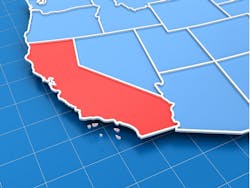Microgrid Knowledge Names ‘Person’ of the Year and Announces Top Stories for 2019
Microgrid Knowledge doesn’t usually choose a person of the year, as Time magazine does. But 2019 produced such a runaway winner, it seemed necessary to do so.
The winner, of course, is California.
Thanks to its green and pro-microgrid policies, California was high on the list of microgrid leaders even before this fall’s wildfire-related power shutoffs. But now the state has reached a whole other stratosphere.
Consider that just one of its utilities, Pacific Gas & Electric, is now seeking about as much microgrid capacity as was installed in the entire US in 2019, according to Wood Mackenzie data.
And PG&E isn’t the only source of microgrid action in California. We’ve been reporting in recent months on a stream of new projects and regulatory efforts across the state. Cities are looking hard at how to create more microgrids. San Jose is even willing to break ties with its utility to do so.
Meanwhile, the California Public Utilities Commission has lauched a rulemaking to find ways to boost microgrid development, possibly through a microgrid tariff. Industry stakeholders have flocked to the proceeding to provide direction and input.
So it’s little surprise that Microgrid Knowledge’s most read story for 2019 (below) is about California’s electric reliability crisis.
But as our other top stories of 2019 show, microgrid growth isn’t distinguished by catastrophe alone. The industry is innovating and growing. Fuel cell microgrids, DC microgrids, supercapacitors, virtual power plants, Puerto Rico’s decentralization, and examples of successful microgrids all captured readers’ attention in large numbers as well.
Below you’ll find our top 10 most read microgrid articles for 2019. We’d like to make note of the stories by Andrew Burger, who we are sad to say passed away November 30 in the Philippines. Those who followed his reporting know that Andrew was an avid traveler with a keen interest in business and social models that could bring clean energy to the poorest in the world. He was also a prolific writer, filing stories for us between planes and trains and even during hurricanes in the Caribbean where he lived, always pushng the world to think a little bit more about how to use energy for good. We know our readers will miss him, as do we.
Most read microgrid stories for 2019.
The power outages to 738,000 electric customers illustrated that even California, one of the lead states deploying microgrids, is not building them quickly enough. What’s particularly notable about this story is its publication date: October 11. Others stories had months to build readership, but this fourth quarter story captured more attention than any others.
The Carlyle Group and Schneider Electric announced a new joint venture, AlphaStruxure, to pursue what they see as a $1 trillion underinvestment in US infrastructure and a fast-growing market for microgrids.
Can renewables cost less than fossil fuel generation? And are they as reliable? It appears so, especially when they are coupled with a suite of distributed energy resources (DERs), such as virtual power plants and demand response.
Connecticut has supercharged development of a 20-MW fuel cell microgrid — part of a $1 billion data center project in New Britain — with a 10-year, $55.2 million sales and use tax exemption.
Jigar Shah is best known as the founder of SunEdison, a company that helped propel solar on its meteoric growth path with no money-down solar financing. But now he’s putting his money and passion behind fuel cells and other clean resources to move the “resource revolution” forward and help the banking community feel more comfortable with these technologies
By Auspicious/Shutterstock.com
A virtual power plant turns on its head the traditional idea of relying on big, centralized power plants for predictable power. But what is it exactly? And who uses virtual power plants and why?
If utilities offered their customers solar energy and took advantage of supercapacitor-based energy storage, we could significantly cut greenhouse-gas emissions.
Puerto Rico’s utility is calling for segmenting the island’s electrical grid into eight minigrids, myriad microgrids and installing more energy storage than is now in all 50 US states.
Direct current (DC) microgrids offer a lot of advantages in today’s digitally networked, electrified world. Yet they face challenges gaining acceptance on the US grid where alternating current (AC) dominates.
Severe heat and storms across the US this summer have strained the electric grid and caused extensive power outages. But the microgrids are working.
Read more about California, the Microgrid Person of the Year, here on Microgrid Knowledge.
About the Author
Elisa Wood
Editor-in-Chief
Elisa Wood is the editor and founder of EnergyChangemakers.com. She is co-founder and former editor of Microgrid Knowledge.
